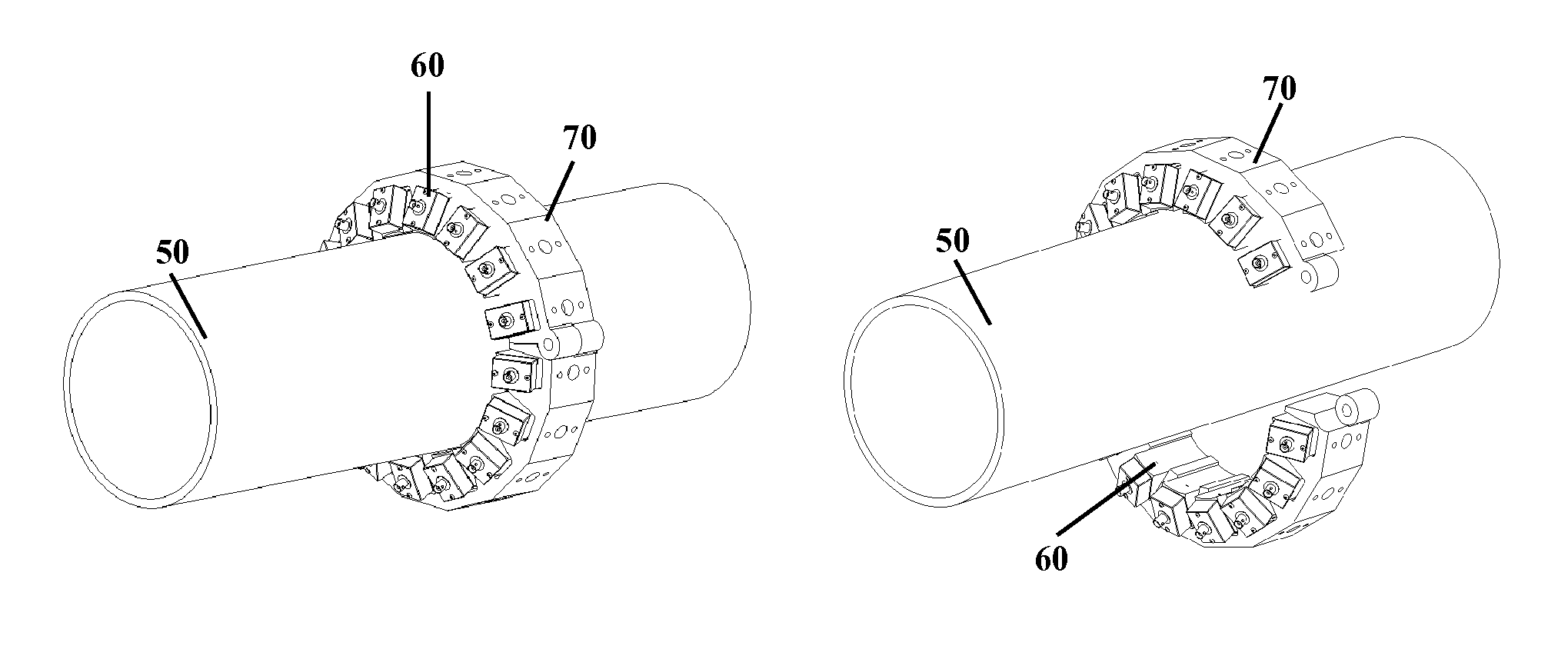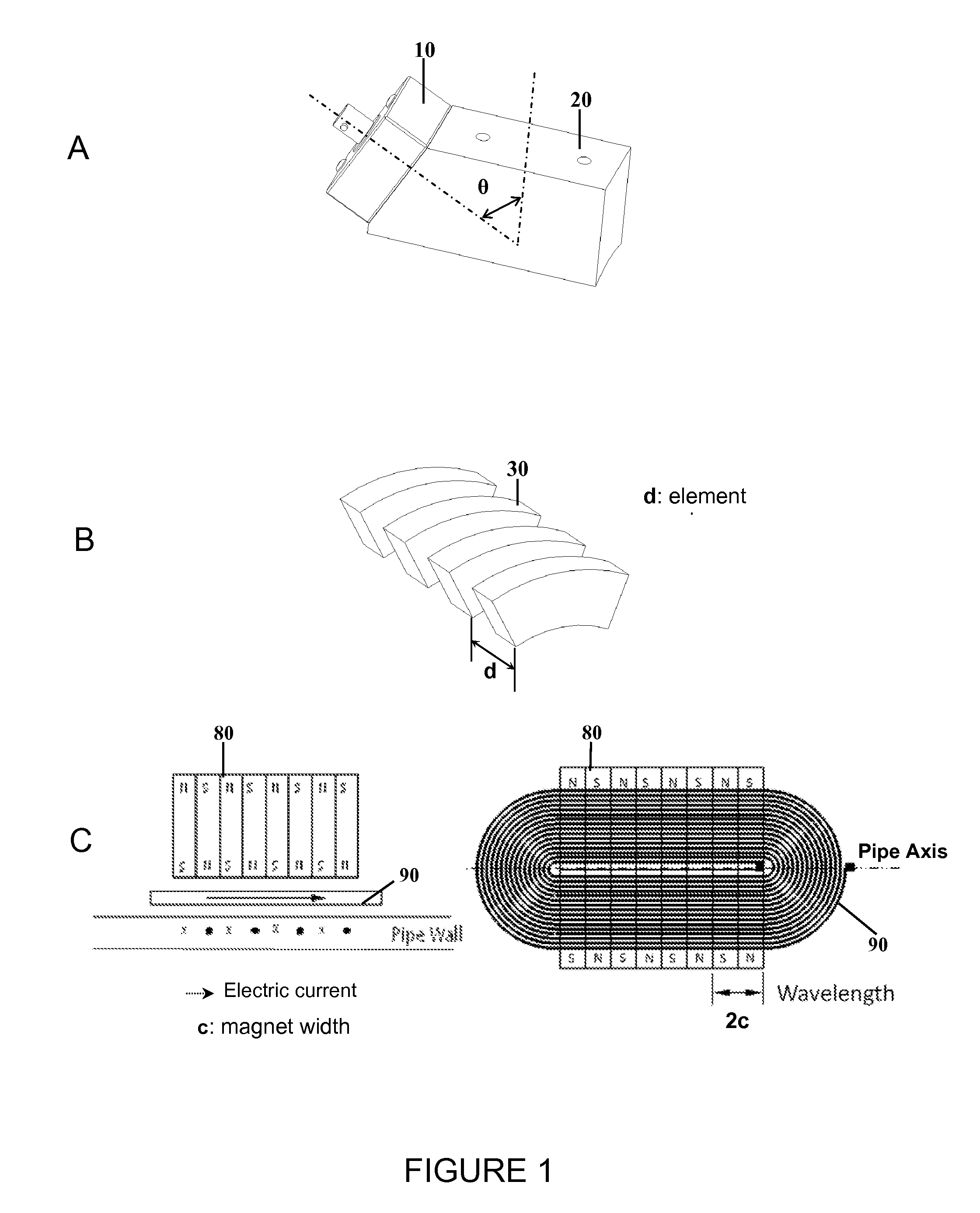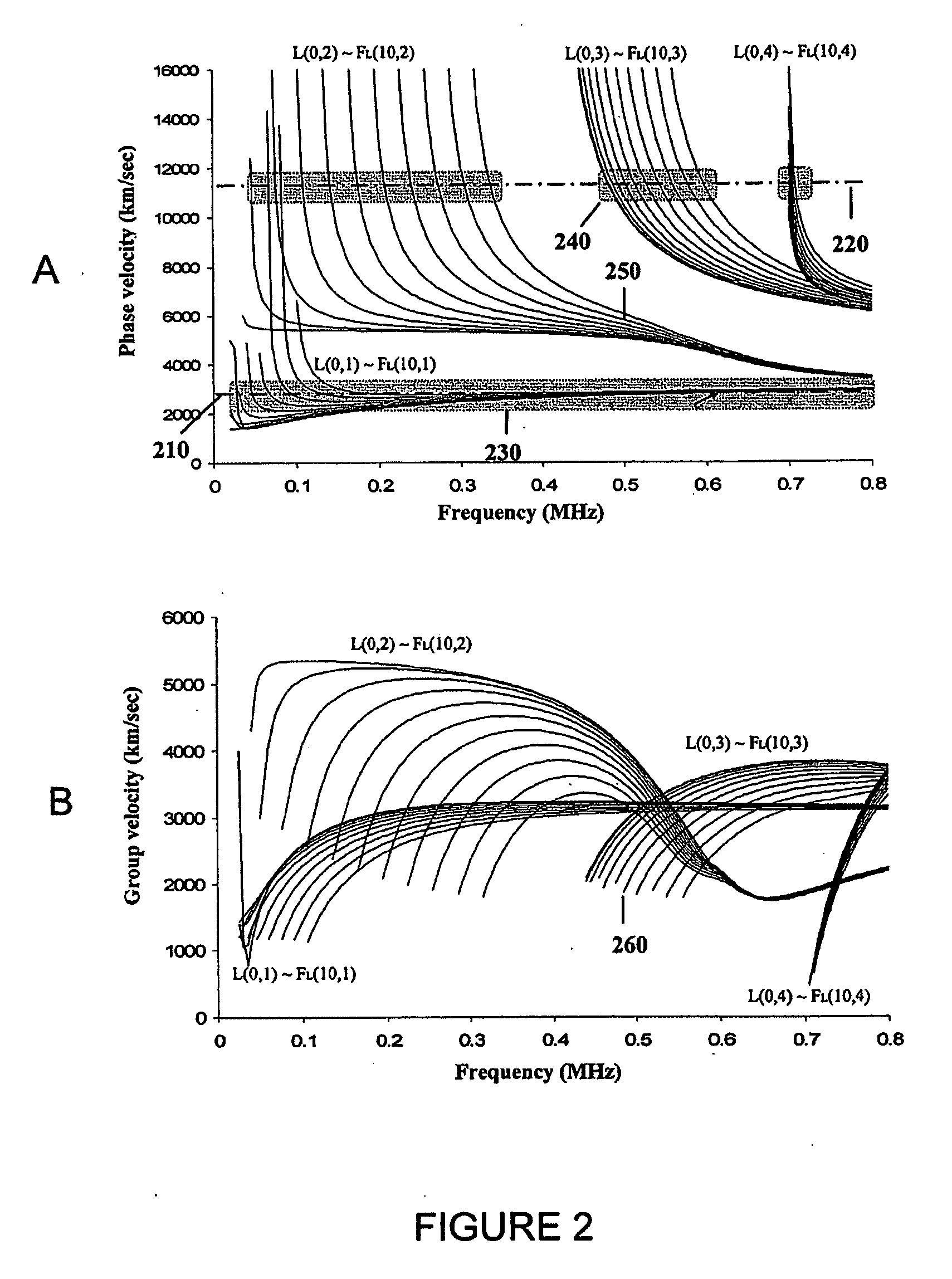Guided wave pipeline inspection system and method with enhanced natural focusing techniques
a pipeline and guided wave technology, applied in the field of pipeline inspection, can solve the problems of difficult interpretation, long-range ultrasonic guided wave inspection systems are currently difficult to use, and are a bit time-consuming
- Summary
- Abstract
- Description
- Claims
- Application Information
AI Technical Summary
Benefits of technology
Problems solved by technology
Method used
Image
Examples
Embodiment Construction
[0059]Referring to FIGS. 1A, 1B, and 1C, in an example embodiment of the invention, three different types of transducers that include angle beam transducers, comb transducers, and electromagnetic acoustic transducers (EMATs), can be used to generate selected guided wave modes in a structure, in this example, a pipe. An ultrasonic longitudinal transducer 10 mounted on an angle beam wedge 20 is called an angle beam transducer, which excites guided waves with a constant phase velocity with a particular incident angle. Individual elements 30 may be placed along an element spacing d along the axis of pipe 90 to be investigated.
[0060]Referring to FIG. 2A, excitation lines 210, 220 of two angle beam transducers placed on a pipe with different incident angles excite the longitudinal axisymmetric and flexural modes within the excitation zones 230, 240. Excitation zones exist at the cross of the excitation lines and phase velocity dispersion curves 250. If being excited simultaneously, a long...
PUM
| Property | Measurement | Unit |
|---|---|---|
| frequency | aaaaa | aaaaa |
| frequencies | aaaaa | aaaaa |
| frequency | aaaaa | aaaaa |
Abstract
Description
Claims
Application Information
 Login to View More
Login to View More - R&D
- Intellectual Property
- Life Sciences
- Materials
- Tech Scout
- Unparalleled Data Quality
- Higher Quality Content
- 60% Fewer Hallucinations
Browse by: Latest US Patents, China's latest patents, Technical Efficacy Thesaurus, Application Domain, Technology Topic, Popular Technical Reports.
© 2025 PatSnap. All rights reserved.Legal|Privacy policy|Modern Slavery Act Transparency Statement|Sitemap|About US| Contact US: help@patsnap.com



